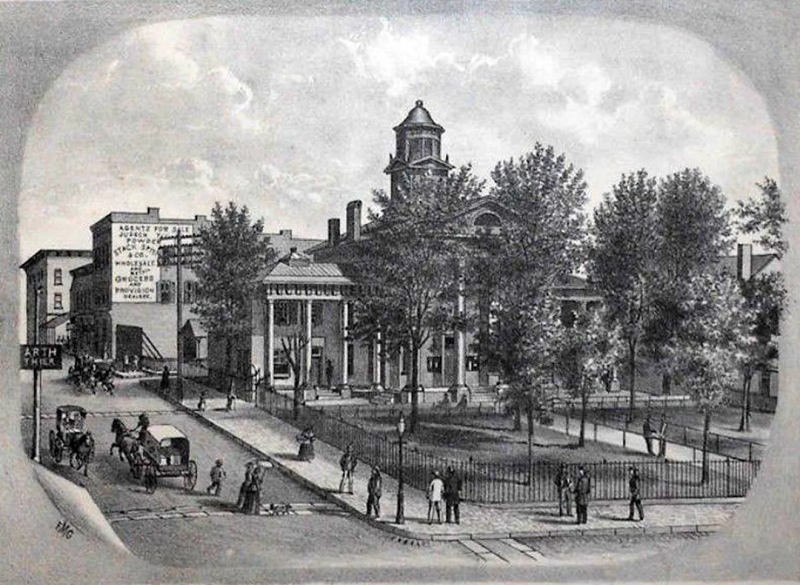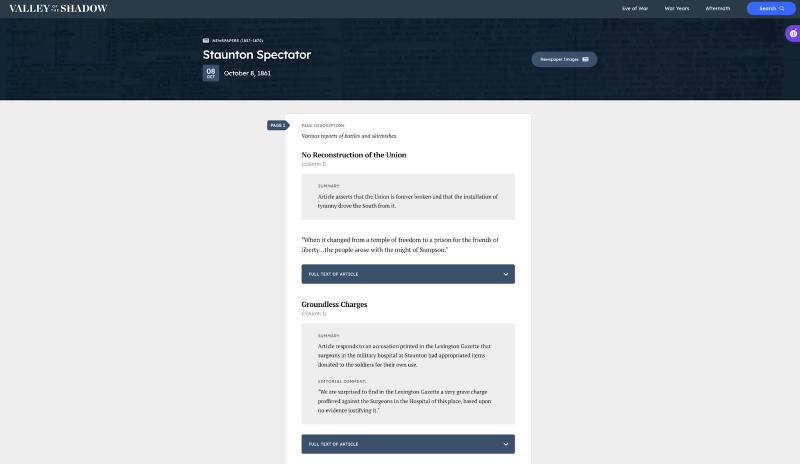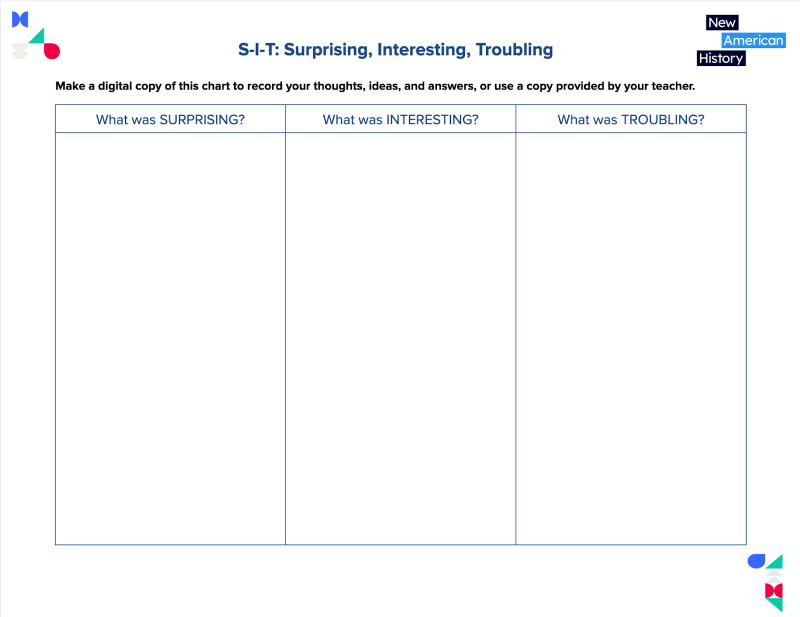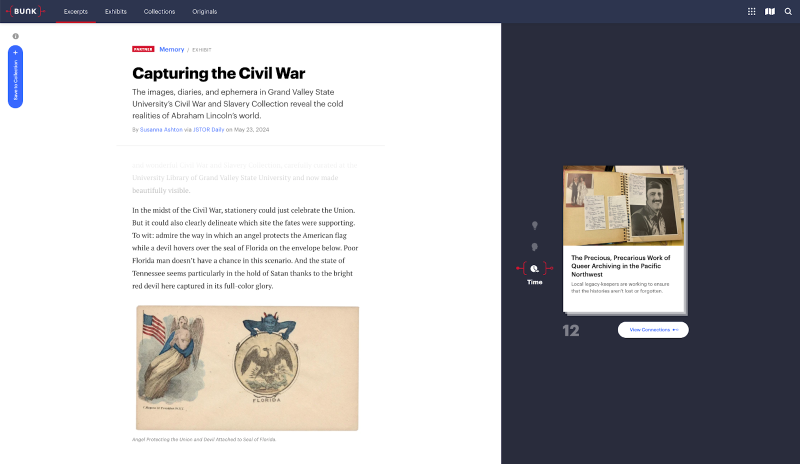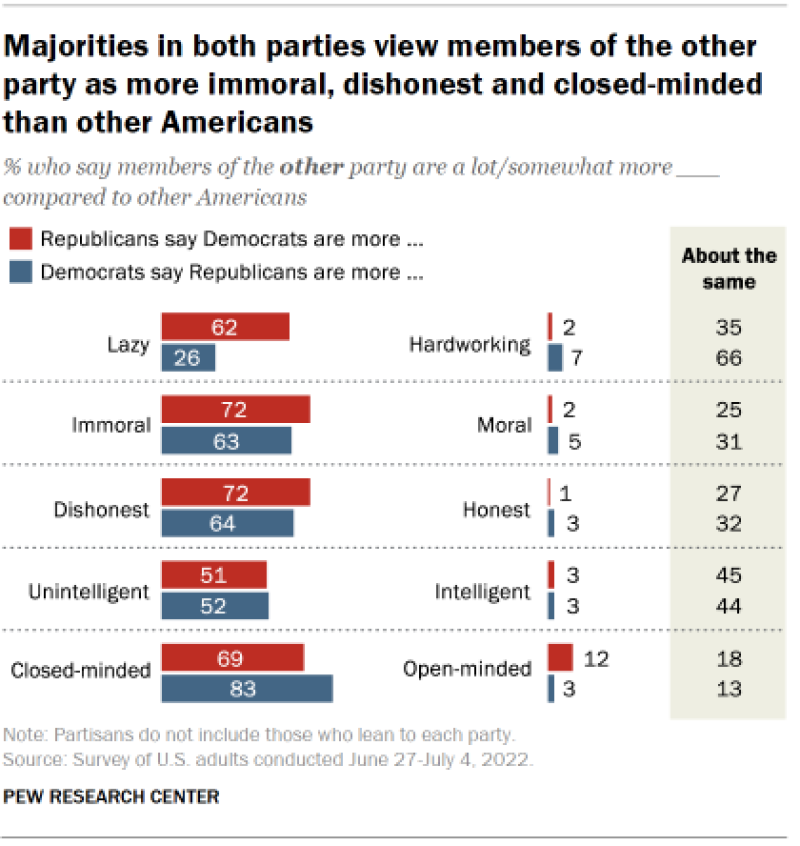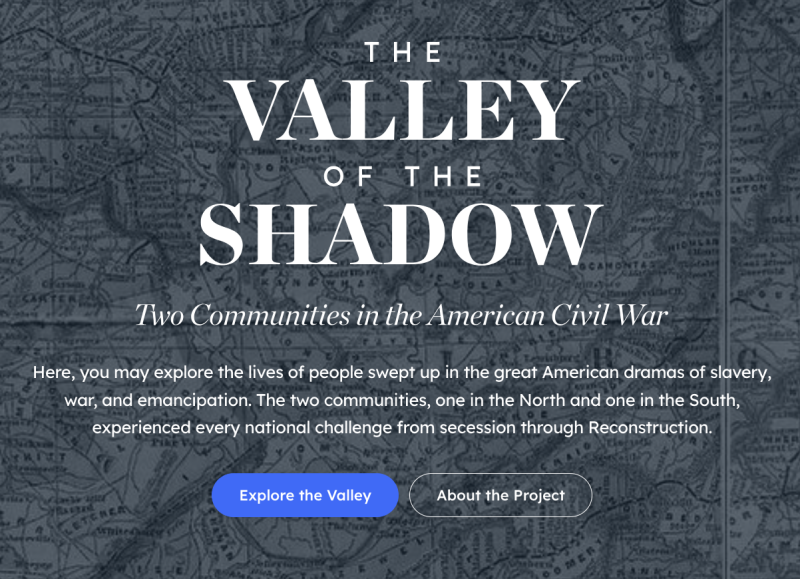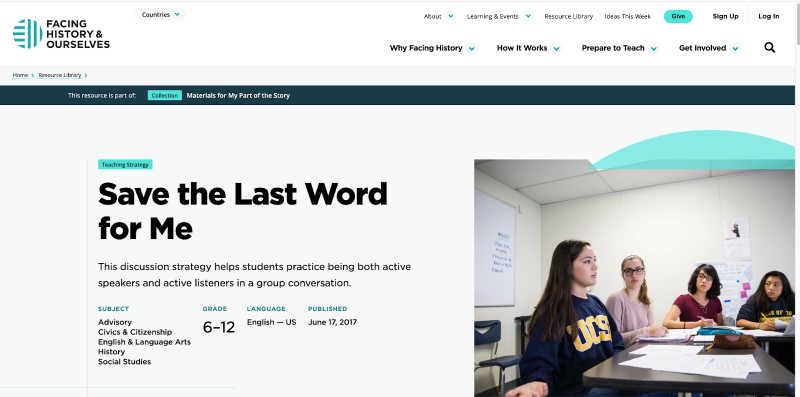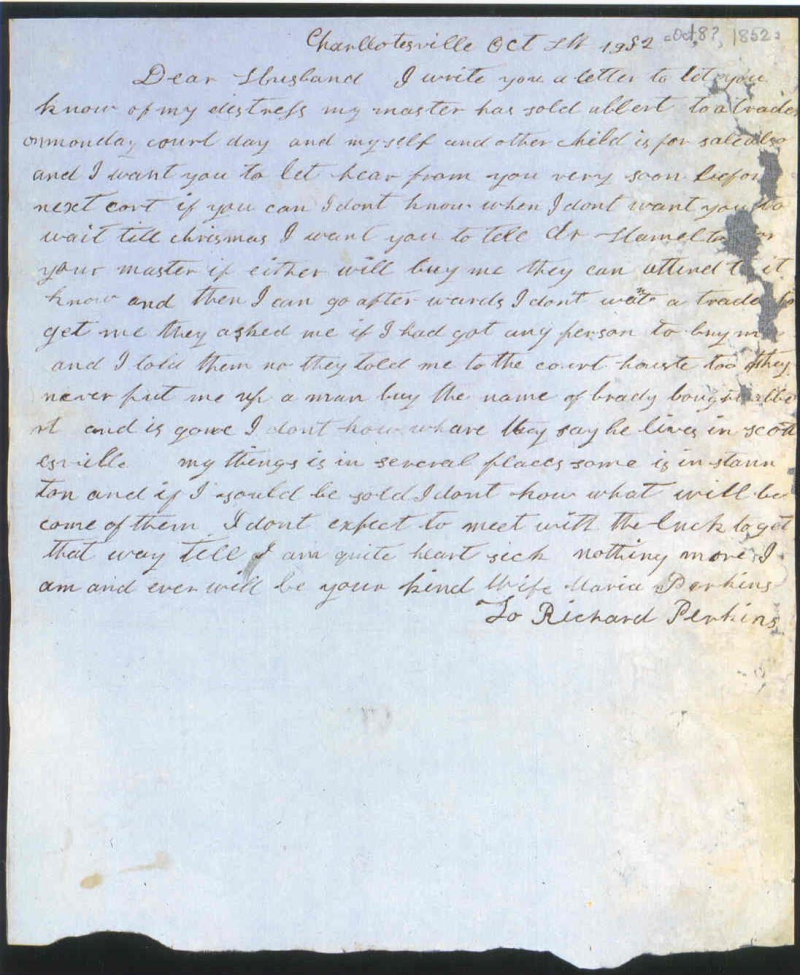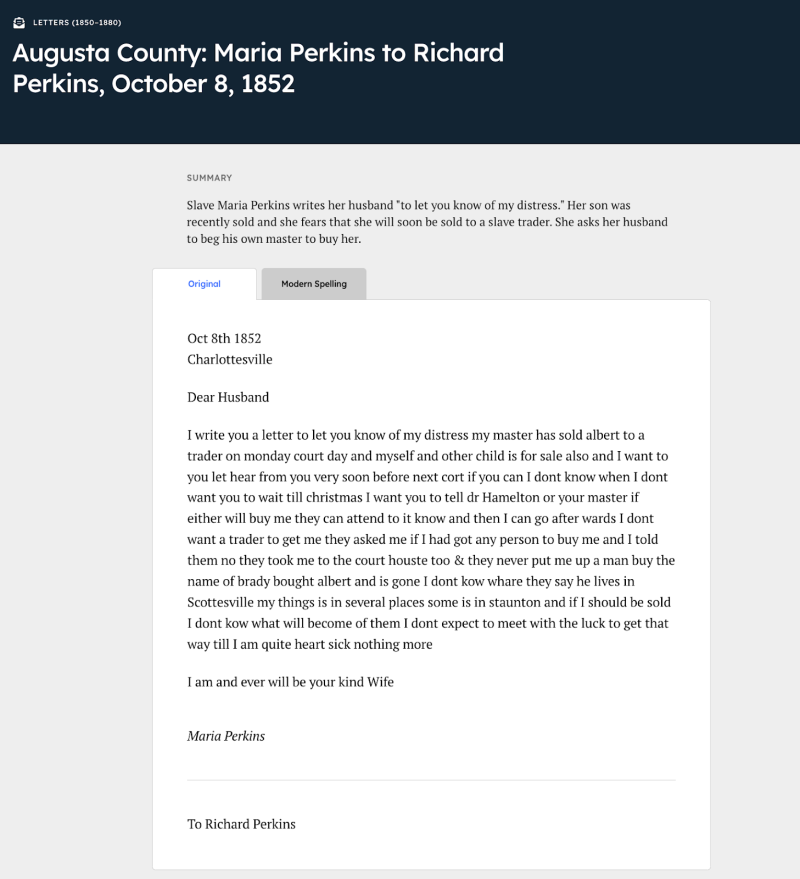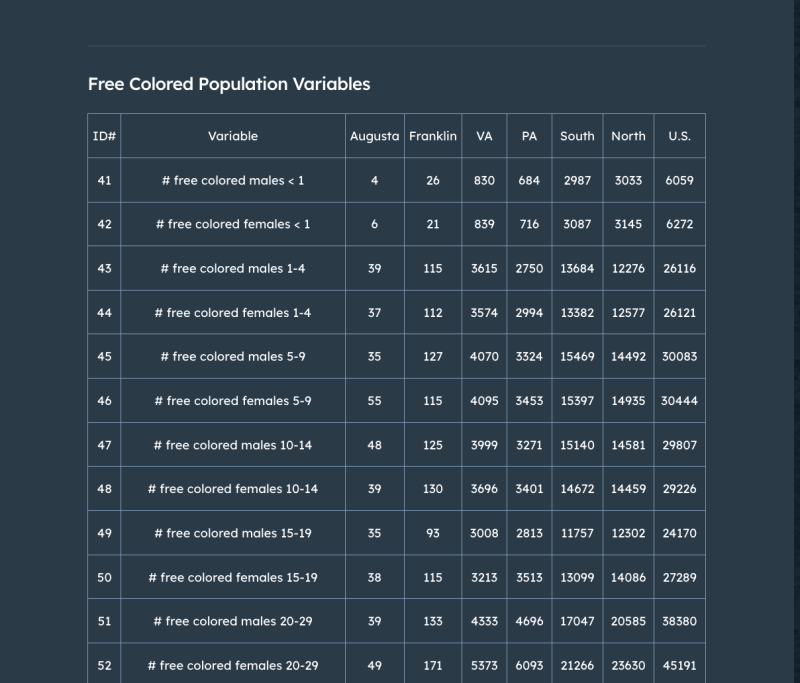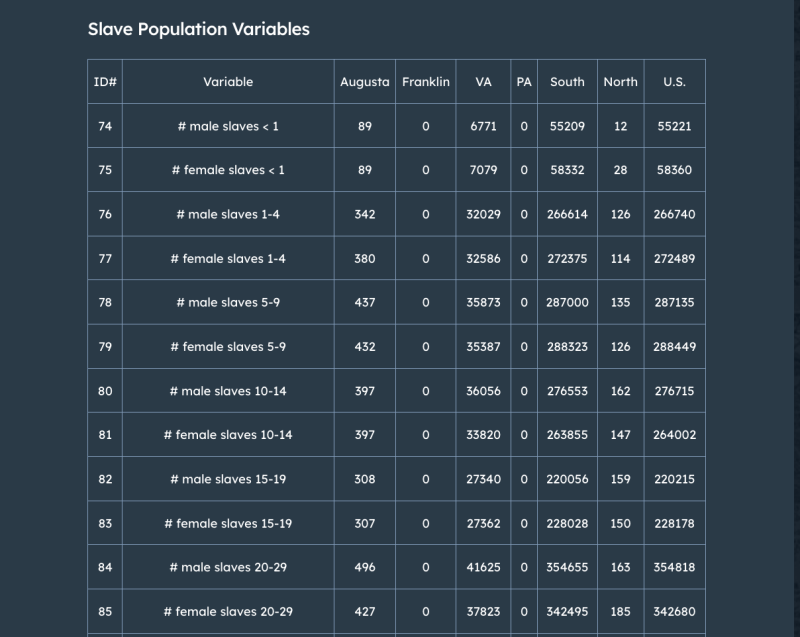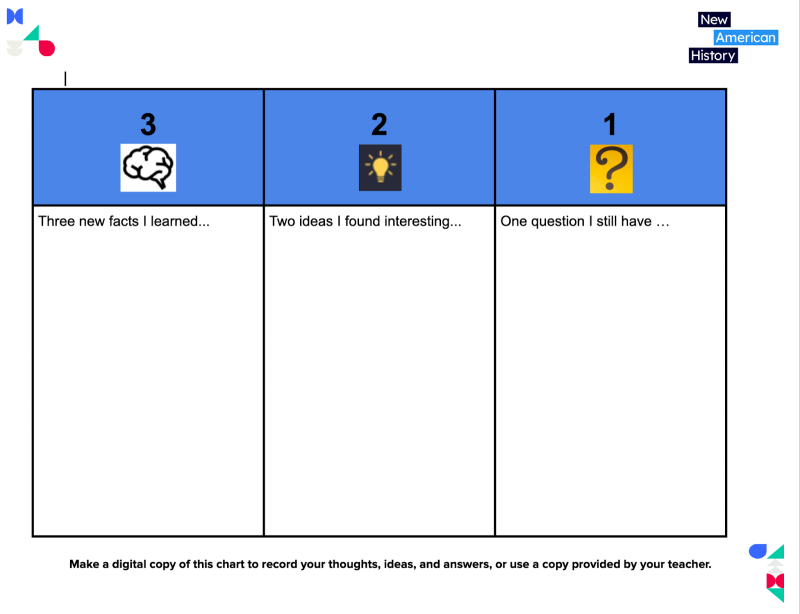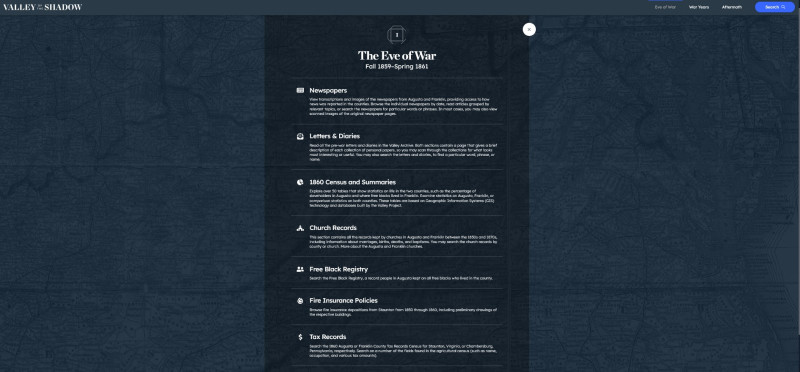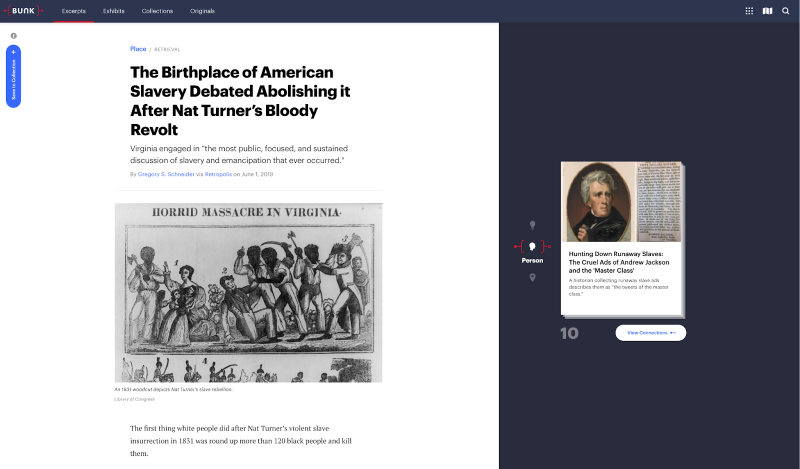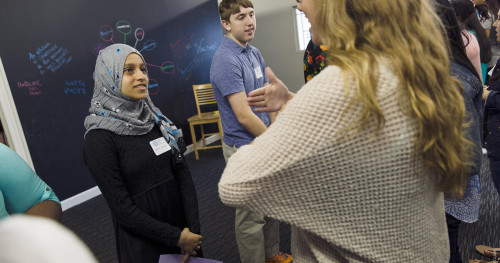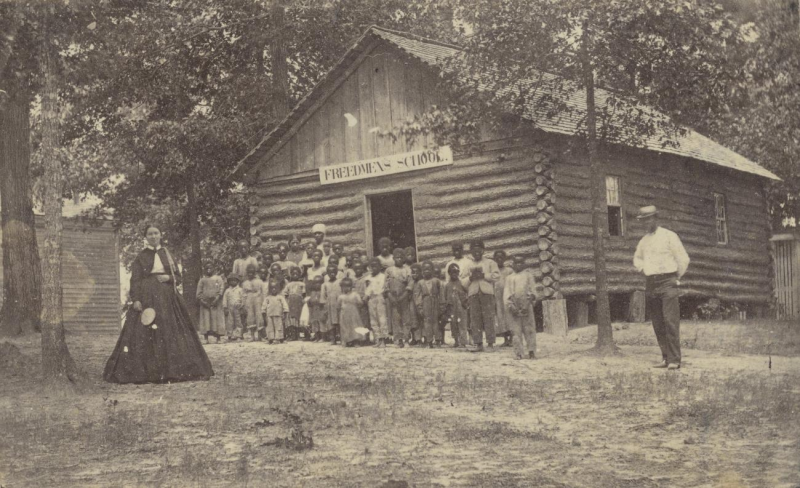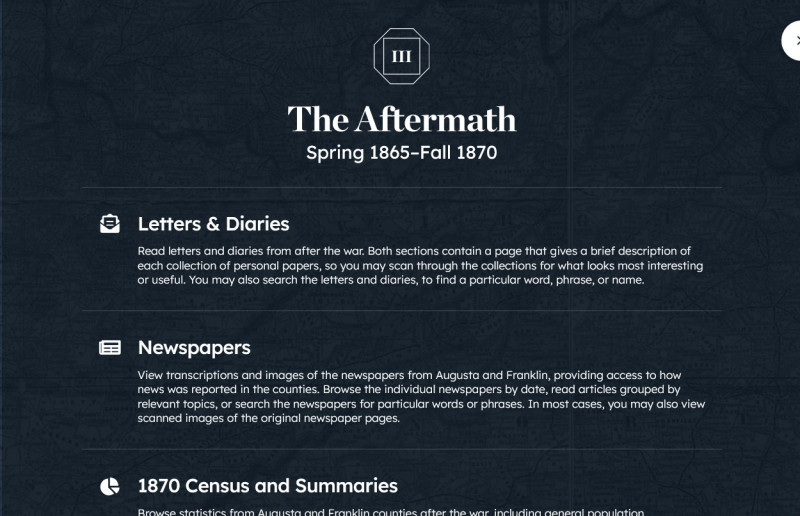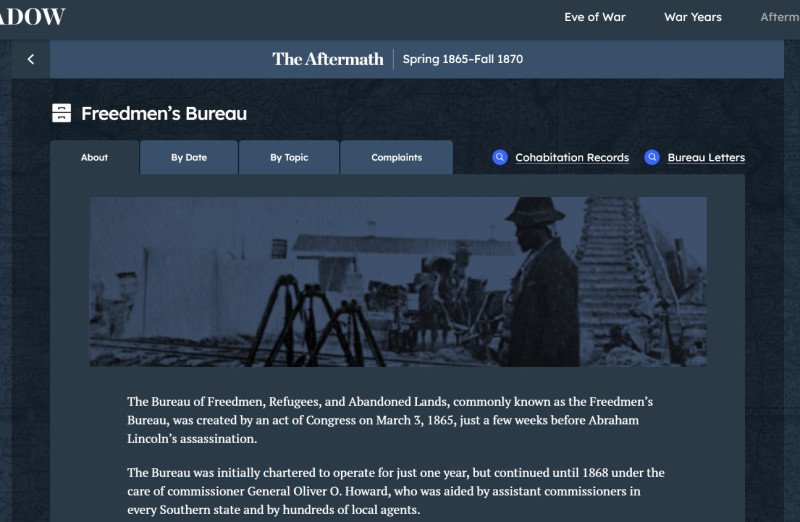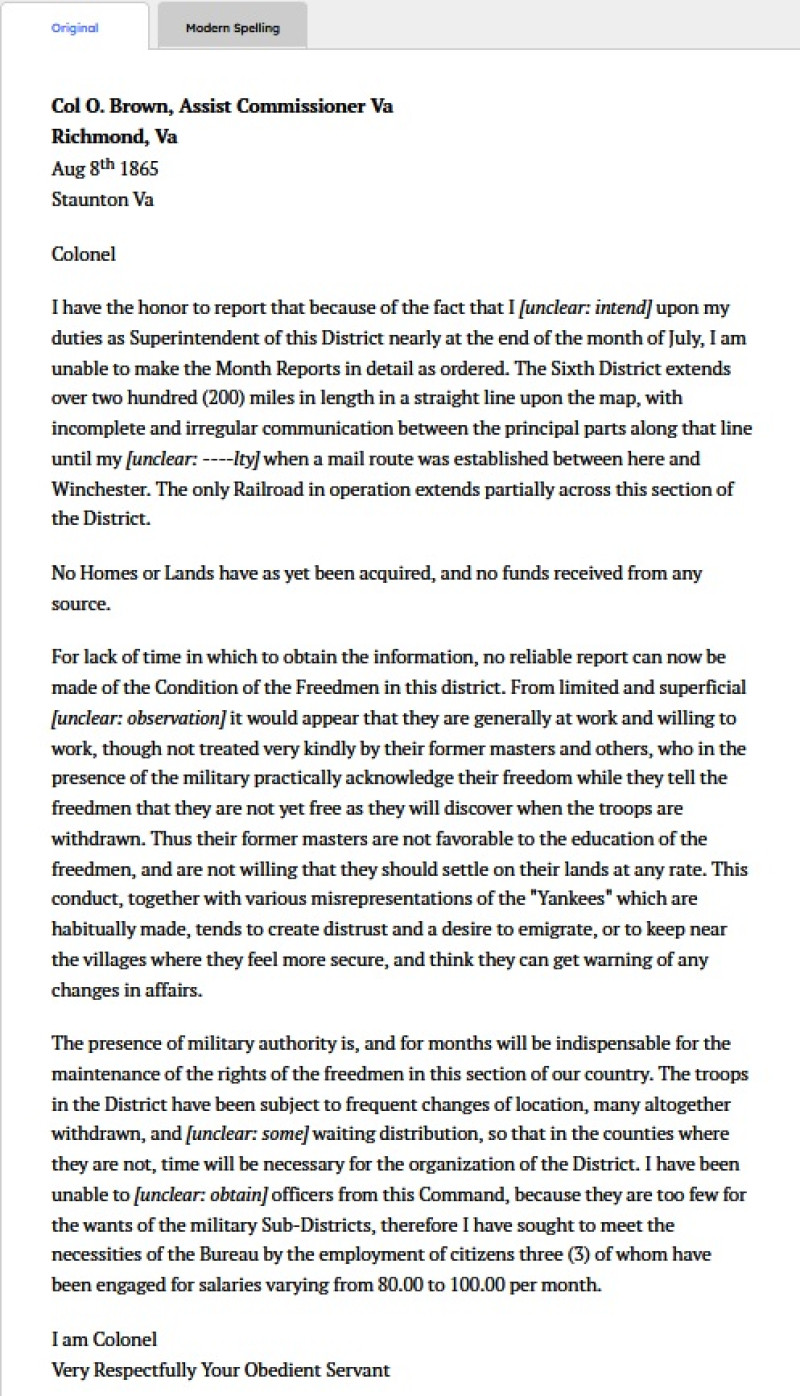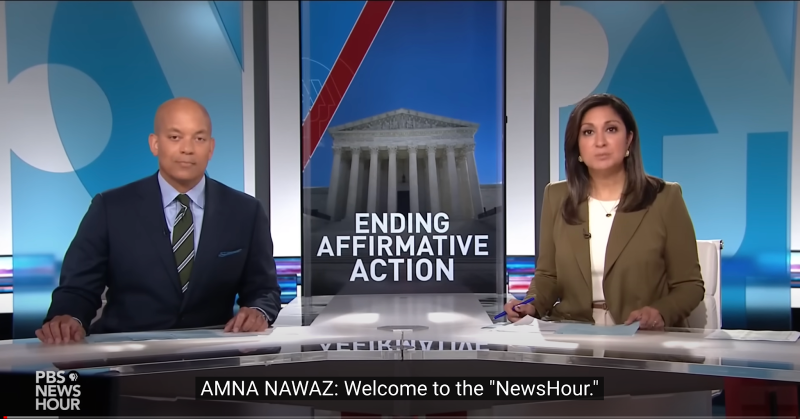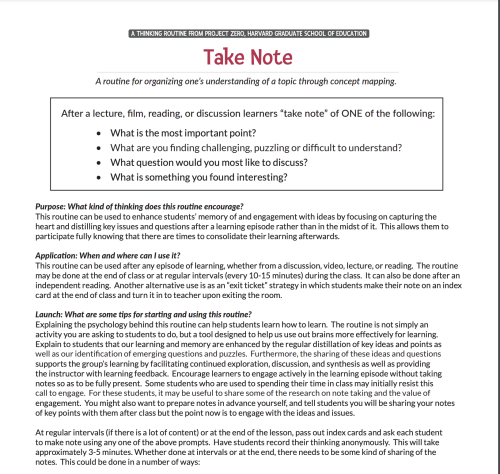This work by New American History is licensed under a Attribution-NonCommercial-ShareAlike 4.0 (CC BY-NC-SA 4.0) International License. Permissions beyond the scope of this license may be available at newamericanhistory.org.
An Intimate View of a Nationwide Fissure: The Valley of the Shadow
Key Vocabulary
Domestic Slave Trade - the practice of transferring enslaved people within the borders of the United States, typically from the Upper to the Deep South
Empathy - the ability to understand and share the feelings of another
Fissure - a major crack, break, or fracture; a separation into subgroups or factions
Granular - highly detailed; having many small and distinct parts
Myriad - a countless, or extremely great number
Tumultuous - full of riotousness, marked by uproar
Secession - the act of withdrawing formally from membership of a political body
Read for Understanding
For Students:
Engage:
In what ways are language/common themes weaponized during moments of political crisis?
In the months following South Carolina’s secession from the United States, ten other southern states joined to ultimately form the Confederacy. Secessionists wanted to preserve the economic and social system that was slavery. However, the use of themes including “freedom” and “rights” played a significant role in the justification for secession.
Examine this excerpt from the Staunton Spectator on October 8, 1861. Take note of the specific words/phrases the author uses to explain the reasons for Virginia’s secession and their outlook on possible restoration of the United States.
Using the Surprising, Interesting, Troubling graphic organizer, capture 2-3 takeaways from the excerpt for each category.
Next, examine the images of Civil War-era envelopes from this Bunk resource. Consider the types of images used to depict opposing sides of the secession debate. Add any additional reflections to your SIT graphic organizer.
Lastly, explore this August 2022 series of polls from Pew Research Center on Republicans' and Democrats’ views of the opposing party. Give special attention to the types of words used by Pew to describe members of the opposing party, and then also peoples’ views of themselves. Add in one or two final reflections on your SIT graphic organizer.
Consider the central question, “In what ways are language/common themes weaponized during moments of political crisis?” and prepare to share an answer using one example from either the Staunton Spectator, Bunk Civil War envelopes, or Pew Research Center. This may be done in groups of 3-4 or as an entire class as directed by your teacher. If working remotely, you may use breakout rooms or video conferencing or share via collaborative documents such as Google Slides or Google Docs.
Your teacher may ask you to record your answers on an exit ticket.
Explore:
To what extent do personal narratives and data impact our view of the Civil War?
In the years leading up to the Civil War, two counties - Franklin in Pennsylvania and Augustia in Virginia - developed along different economic paths, one inextricably linked to slavery and the other with a substantial free black population. Both communities experienced the war and Reconstruction years in their own unique ways, heavily influenced by geography, economics, and above all else, the people themselves. Their letters, court records, photographs, and myriad other documents invite us to explore deep questions such as:
- What caused the Civil War?
- How did enslaved people navigate emancipation and enfranchisement?
- Why did southern states secede and what were its implications?- using a granular lens through which to view one of America’s most tumultuous periods.
Context: In the years leading up to Virginia’s secession, the domestic slave trade greatly increased, with enslaved people in the Upper South often being bought by traders and sent to the Deep South where the demand for labor was much greater. In this letter, Perkins expresses great concern over the sale of her son, Albert, to a trader and begs her husband to have his master purchase her.
Deeper Discovery: using the Save the Last Word for Me strategy, take some independent time with Perkins’ letter, accessible here.
Follow the process of sharing takeaways/answers to probing questions from your teacher in groups of 3-4. If working remotely, your teacher may allow you to use breakout rooms through videoconferencing or share via a collaborative document such as Google Docs or Google Slides.
Intent & Impact: to read a primary document, think about, discuss, and internalize the impact of the domestic slave trade on families.
Examine the comparison maps between the two counties. Specifically, scroll down and pay attention to the Infrastructure and Agriculture maps. Turn and Talk to an “elbow partner” and share one interesting similarity and one interesting difference between the two counties as illustrated by the maps.
How do the maps increase your understanding of the Civil War in these communities?
Now examine the Free Colored Population Variables and Enslaved Population Variables from the 1860 Census.
Turn and Talk with a partner and discuss the following questions:
- What is something I found surprising about the Free Colored Population Variables in each county?
- What is something I did not find surprising about the Enslaved Population Variables in each county?
- What story (or stories) do these data not accurately capture and where might we find them?
Lastly, using this 3-2-1 Chart, record your findings from Maria Perkins’ 1852 letter, the comparison maps between the two counties, and the 1860 Census data. Lean heavily into the sources using phrases such as “according to…” and “as demonstrated by…” Please copy and submit to your teacher when finished.
Your teacher may ask you to record your answers on an exit ticket.
Explain:
How “free” were free black people within slave societies?
Navigate to the Eve of War (Fall 1859-Spring 1861) section of The Valley of the Shadow and select the Free Black Registry.
After reading the first two paragraphs independently, Turn and Talk to an “elbow partner” to:
- Paraphrase what you believe is meant by: “more affectually restrain the practice of negroes going at large.”
Next, explore the registry using some of the names you came across in the introduction such as Robert Campbell and/or Vena. Turn back to that elbow partner to discuss:
- Did you notice any common characteristics of the entries in the registry?
- How are free Blacks described?
- How might that limit and/or maintain their free status?
Access this excerpt from Bunk on Nat Turner’s 1831 rebellion. After reading the excerpt, discuss with 2-3 people around you the following questions/prompts:
- What is surprising about the impact of Turner’s rebellion on white lawmakers in Virginia?
- This rebellion is critical to how we think about “free blacks” because…
Next, explore the Connections with this piece. As you explore the headlines of various connections, take note of any common themes that show up under the “Tags.” Discuss and document your thoughts based on this question:
- While we often think of “emancipation” as an end to slavery, what do the titles of these Bunk Connections pieces suggest about emancipation that is different from the common understanding?
“Black rebellion and protest, though, have historically never been coupled with allegiance to American democracy.”
Finally, consider the above quote from Atlantic writer Kellie Carter Jackson in this excerpt from Bunk.
Looking back at the Bunk Connections with the piece on Nat Turner’s Rebellion, identify one quote from another piece that supports Jackson’s claim. An example would look like:
“In his piece from The Conversation in 2022, Kris Manjapra states that ‘emancipations did not remove all the shackles that prevent Black people from obtaining full citizenship rights.’
Prepare a Barometer Discussion on the central question: how “free” were free Black people within slave societies? Strive to cite at least one piece of evidence from the Free Black Registry and/or any of the Bunk pieces (Nat Turner’s Rebellion or Connections) to support your claim.
Your teacher may ask you to record your answers on an exit ticket.
Elaborate:
What types of services/skills might newly emancipated people need that they would have been prohibited from under the institution of slavery?
In March 1865, just a few weeks before Lee’s surrender at Appomattox and Lincoln’s assassination, Congress created the Bureau of Freedmen, Refugees, and Abandoned Lands - more commonly referred to as the Freedmen’s Bureau. The Bureau operated from 1865-1868 in every former Confederate state, with hundreds of local agents working to support newly emancipated freed people. Begin this phase of the inquiry by brainstorming with 3-4 people the question above.
Capture the brainstorm on a large piece of flipchart paper or a whiteboard. If working remotely, capture the brainstorm in a collaborative document such as Google Docs.
Next, examine this image of a school in New Bern, North Carolina from the Smithsonian National Museum of African American History and Culture collection.
Returning to your group’s brainstorm flip chart/chat/Google Doc:
- What items do you see portrayed in this image?
Next, visit The Aftermath (Spring 1865-Fall 1870) section of Valley of the Shadow and select The Freedmen’s Bureau. The “About” section details the story of the Freedmen’s Bureau in the Shenandoah Valley. The Bureau Superintendent in Staunton was W. Storer How.
In this letter, from August 8, 1865, he writes to Colonel Orlando Brown, commissioner of the Freedmens’ Bureau in Richmond.
After reading the letter, return to your group’s brainstorm list and:
- Imagine what Superintendent How would add to the list
- Discuss why his perspective is uniquely helpful to understanding the situation of freed people in Augusta County
Now select the Complaints section. The bureau agents in Staunton kept a record of complaints brought to the office that give us many insights into the lives of Augusta County’s freed people and whites in the early years following the Civil War. Some of the most common themes of the complaints are labor disputes and crime.
Spend 10-12 minutes exploring the complaints and:
- Document any common themes that seem to be arising
- Discuss if freed peoples’ situations seem to be improving or not between 1865-68
Finally, create a Word Cloud using your group’s brainstorming ideas and take-aways from examining the image of the New Bern, North Carolina school, W. Storer How’s letter to Orlando Brown, and exploration of the Complaints section. Be prepared to share evidence-based reasons (“as demonstrated in…” “according to…” “illustrated by…”) for why words are their particular sizes.
Your teacher may ask you to record your answers on an exit ticket.
Extend:
How relevant is the Freedmen’s Bureau in contemporary America?
In 2022, the U.S. Supreme Court decided the case Students for Fair Admission v. President & Fellows of Harvard College. Begin by viewing Breaking down the Supreme Court's ruling ending affirmative action in college admissions from the PBS NewsHour.
While/after viewing, review the questions in the “Take Note” Thinking Routine.
After watching, choose one of the following questions to answer in a “Four Corners”-style Barometer Discussion by heading to the corner of the room associated with each question.
- What is the most important point?
- What are you finding challenging, puzzling, or difficult to understand?
- What question would you most like to discuss?
- What is something you found interesting?
In a July 2023 piece from The Atlantic, journalist Adam Swerer quoted Supreme Court Justice Clarence Thomas who in his concurring opinion in the case made a connection between the affirmative action case and the Freedmen’s Bureau. Thomas wrote:
“The 1866 Freedmen’s Bureau Act then expanded upon the prior year’s law, authorizing the Bureau to care for all loyal refugees and freedmen … Importantly, however, the Acts applied to freedmen (and refugees), a formally race-neutral category, not blacks writ large. And, because “not all blacks in the United States were former slaves,” “‘freedman’” was a decidedly underinclusive proxy for race.”
Now examine the same four questions from the “Take Note” Thinking Routine and revisit a corner of the room associated with a question that most piques your interest based on Justice Thomas’ words.
Returning to the Freedmen’s Bureau “By Topic” section in Valley of the Shadow, explore and identify two letters that support, refute, and/or modify Thomas’ claim that “freedmen” was a “formally race-neutral category.”
After identifying your two letters, prepare talking points for Justice Thomas using this “Advice to a Current Leader” Graphic Organizer. After completing, be prepared to participate in a discussion on how to best respond to Justice Thomas’ claim about “freedmen.”
Your teacher may ask you to record your answers on an exit ticket.
Citations:
Army University Press, ed. Publisher’s Note on the use of Civil War Terms, April 2021. https://www.armyupress.army.mil/Portals/7/combat-studies-institute/publishers-note-on-use-of-civil-war-terms.pdf.
“Republicans and Democrats increasingly critical of people in the opposing party.” 2022. Pew Research Center. https://www.pewresearch.org/politics/2022/08/09/republicans-and-democrats-increasingly-critical-of-people-in-the-opposing-party/.
“PBS News Hour | Breaking down the Supreme Court's affirmative action ruling | Season 2023.” 2023. PBS. https://www.pbs.org/video/ending-affirmative-action-marcia-1688072348/.
Serwer, Adam. 2023. “What Was Clarence Thomas Thinking?” The Atlantic. https://www.theatlantic.com/ideas/archive/2023/07/freedmen-race-neutral-supreme-court-affirmative-action-clarence-thomas/674641/.
“Staunton hosted secession debate in 1861.” 2018. The News Leader. https://www.newsleader.com/story/news/history/2018/12/31/staunton-hosted-secession-debate-1861/2430969002/.
Valley of the Shadow: Two Communities in the American Civil War, New American History. http://valley.newamericanhistory.org.
Valley of the Shadow: Two Communities in the American Civil War, University of Virginia Library. http://valley.vcdh.virginia.edu/govdoc/popcensus.html.


